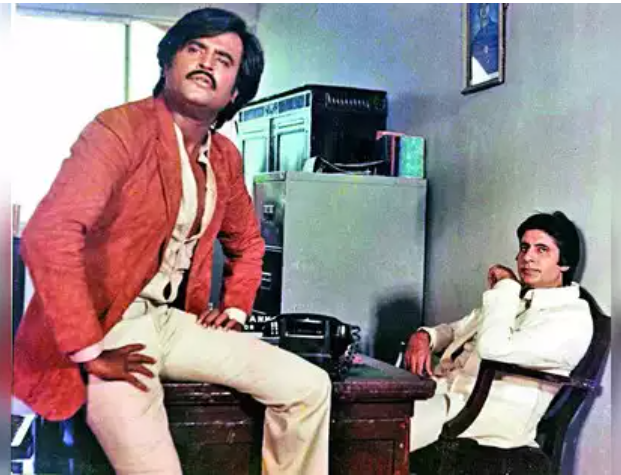Consider per-capita GDP in the top half of states. The richest are the mini-states of Goa and Sikkim. Among major states, toppers are Telangana and Karnataka, but Haryana, a northern state, is a close third. Tamil Nadu comes lower. Next are Gujarat, Kerala and Maharashtra. The West is India’s industrial powerhouse. Mumbai is India’s commercial capital.
A bogus discussion breaks out periodically about a north-south divide in India that endangers national unity and could be secessionist. The Economist recently highlighted a supposedly growing economic divide, which, compounded by BJP emphasis on Hindi and false central cases against southern Opposition politicians, could cause national fragmentation. ‘Over the next decade, this sort of confrontation could get in the way of essential economic reforms. In the very worst scenario, it could even lead to calls to break up India.’
This is rubbish. UP and Bihar have always been among the poorest and most backward states, and some southern states among the most dynamic. That is not news. Indian states have such varied languages, religions and customs that Churchill in 1947 declared, ‘India is no more a country than the equator.’ Many foreign observers predicted that India would break up.
Defying such predictions, India has become a solidly unified country. This is thanks not just to political savvy and compromises but the unifying power of Bollywood, Lata Mangeshkar and cricket. Secessionists exist in Kashmir and the northeast. But that is not a north-south matter.
The Economist says, ‘The southern five of India’s 28 states (Andhra Pradesh, Karnataka, Kerala, Tamil Nadu and Telangana) contain 20% of the population, but account for 30% of its loans and for 35% of the flow of foreign investment in the past three years. Better government, education and property rights help explain this outperformance and have fostered enterprise and a more sophisticated financial system. A gap that has existed since independence in 1947 has widened over the decades. In 1993, the south contributed 24% of India’s GDP. The latest figure is 31%.’
True, but utterly misleading. This ignores the West – Gujarat, Maharashtra, and Goa – among the most dynamic states, belonging to neither north nor south. The east has different characteristics, with Odisha becoming a miracle state under Naveen Patnaik. India cannot be divided into just north and south. Besides, many northern states are booming like southern ones.
Consider per-capita GDP in the top half of states. The richest are the mini-states of Goa and Sikkim. Among major states, toppers are Telangana and Karnataka, but Haryana, a northern state, is a close third. Tamil Nadu comes lower.
Next are Gujarat, Kerala and Maharashtra. The West is India’s industrial powerhouse. Mumbai is India’s commercial capital. Next come Uttarakhand and Himachal Pradesh, a bit above Andhra Pradesh. All these states exceed the national average.
None will be surprised that UP and Bihar are worst. They always were. But many northern states vie with southern ones in prosperity, so the supposed north-south divide is highly misleading. Within the north, Punjab and Himachal are as different from Bihar as Tamil Nadu or Andhra Pradesh.
Hindi-speaking states of the north vote solidly for Narendra Modi in general elections. But many have voted for non-BJP parties in state elections. BJP has problems in the south, but in Karnataka has won the majority of parliamentary seats in all elections since 2004, getting 25 of the 28 seats in 2019. So, the state that The Economist extols as the hub and future of hi-tech India is very much Modi territory.
Tamil Nadu hates Hindi more than it hates BJP. DMK rioted and threatened secession in 1963 when it seemed Hindi might be imposed on all states. Nehru brought permanent peace by declaring all states would be free to transition to Hindi when they pleased. Tamil secessionist talk is now ancient, irrelevant history. Kerala is the one remaining communist stronghold. BJP still seeks a foothold here.
A country as large and diverse as India will always have Centre-state disputes. That is a healthy democratic sign, not evidence of secession. Regional passions caused Ireland’s exit from Britain in 1921, and more recently almost caused Scotland’s exit. India is far more united.
BJP is not a blind ideologue, as some allege, and could never have become powerful in Karnataka if it was a Hindi fanatic. It extols Hindutva, yet is flexible enough to allow cow slaughter in Goa, Nagaland, Arunachal Pradesh and other states where beef-zeating is customary. This flexibility has allowed it to expand pan-India.
Finally, let none think BJP is out of southern politics. It has just forged an alliance with TDP in Andhra Pradesh, a combination that has won in the past. It has also won in the past in Tamil Nadu allied to AIADMK, a party now splintered beyond recognition.
Only in Kerala – in West Bengal, it is the largest opposition party – has BJP never sniffed power. But even in Kerala, Padmaja, daughter of former Congress CM K Karunakaran, has joined BJP. So has Anil Antony, son of former Congress defence minister A K Antony. BJP has an old RSS base here that it can build on.
In sum, India is not cloven by a yawning north-south divide. Both have a fascinating variety of states with economic, political and cultural differences. Cherry-picking a few characteristics to define a fictional north and a south and tom-tom a great divide is idle journalism.


